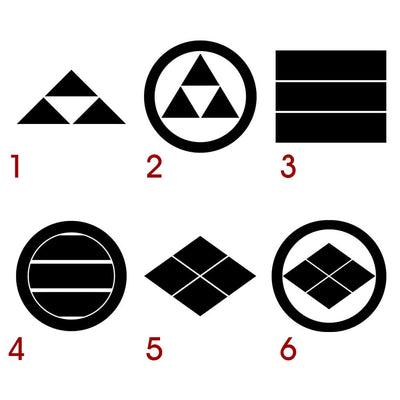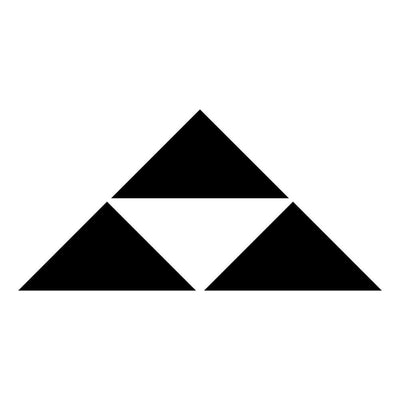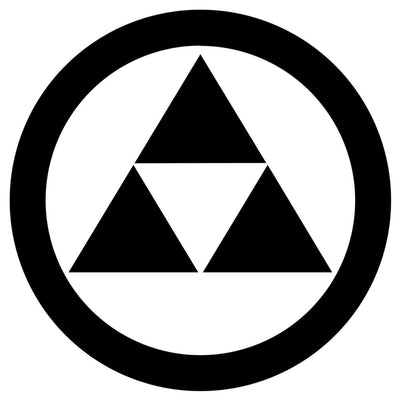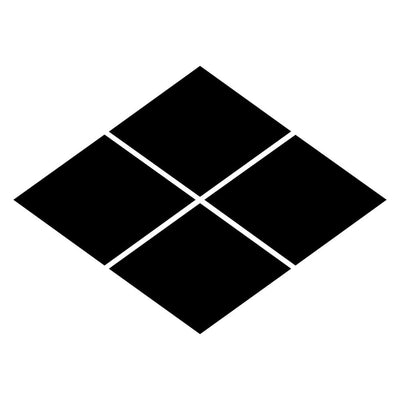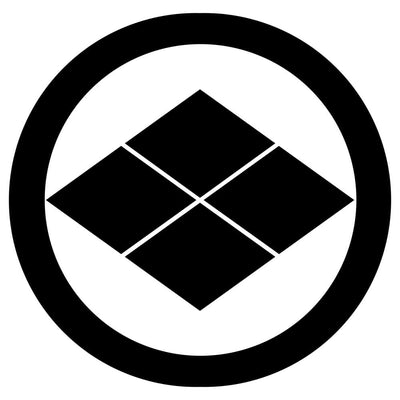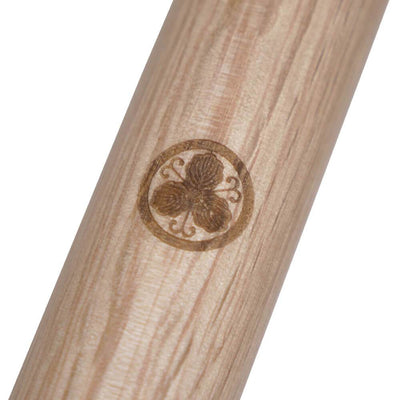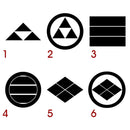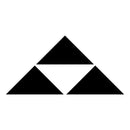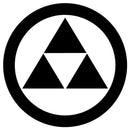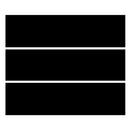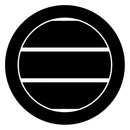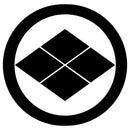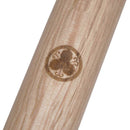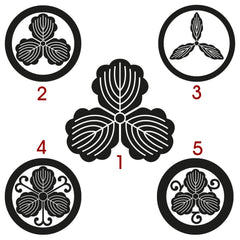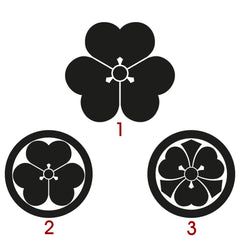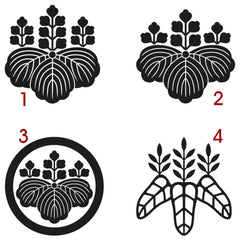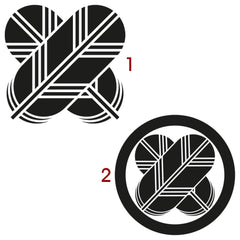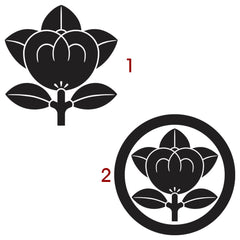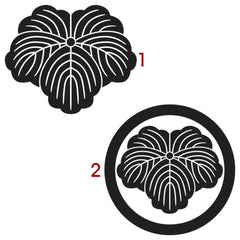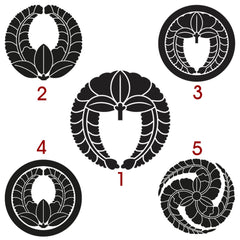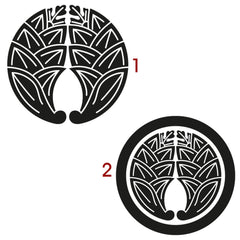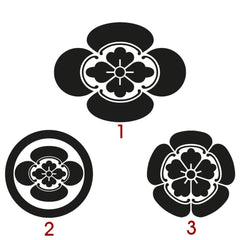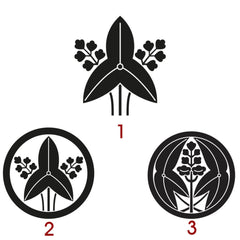Geometric Kamon Engraving
Product Information & Size Chart
-
Geometric Kamon Engraving
Japan's first elite warriors, the samurai, originated from the mid- and lower ranks of the Heian aristocracy. Their sense of belonging gradually shifted from Kyoto’s court to the bushidan, and the idea of a "warrior class" in its own right emerged. Yet, the lines between nobility and military were still somewhat blurred, since through marriages and births the four families of Fujiwara, Tachibana, Taira and Minamoto were not only all interwoven but also connected to the imperial bloodline and its different branches.
Following the fall of the Taira and the inception of the Kamakura shogunate however, a sharper line began to appear between the nobility (kuge) in Kyoto and the samurai (buke) in Kamakura, taking both worlds further away from each other. Each side would eventually develop its own customs and culture, almost estranged from the other.
This distinction is somewhat apparent in the field of Kamon as well. At the beginning of the Kamakura period, noblemen already used intricate emblems, but when Minamoto no Yoritomo ordered his warriors to adopt their own mon, they more often than not came up with very simplistic, unelaborate designs. This does not necessarily implies a wide gap in education, taste and refinement between the two circles (although the Kyoto party surely did see the Kamakura stock as a bunch of grubby ruffians), but was probably more correlated with a certain need for efficiency: if kamon were to be used on the battlefield, they needed to be simple enough in order to be painted quickly on standards rather than embroidered, they had to be easily recognisable from afar and required thus distinct enough patterns as to not confuse one with another.
Kamon 1
Hojo Uroko (Hojo Clan’s 3 snake scales).
Regent (shikken) of the Kamakura shogunate, the Hojo masterfully manipulated the political chessboard to deprive their lords, the Minamoto shoguns, from real governmental power. The Hojo's kamon represents three snake scales laid in a pyramidal fashion.Kamon 2
Maru ni Mitsu Uroko (3 snake scales in a ring).
A famous variation of the Hojo Uroko, said to have inspire the Triforce emblem in the Legend of Zelda video game. The uroko triangles design seems to be favoured by the video game industry, since it inspired as well the imaginary kamon used by the main character in Ghost of Tsushima.Kamon 3
Miura Mitsu Hikiryo (early version) (Miura Clan’s 3 stripes).
Like many of the early warrior mon, the Miura Clan's emblem was not circular but displayed instead 3 bold stripes, easy to spot on a battlefield.Kamon 4
Miura Mitsu Hikiryo (later version) (Miura Clan’s 3 stripes).
From the second half of the Muromachi period, Kamon design slowly evolved to adapt to a new type of samurai garment called kataginu. It was a sleeveless robe with pointed shoulders, often worn in combination with a hakama (large pair of trousers) to make the formal outfit known as kami-shimo. Since kataginu was a formal garment worn during special ceremonies or interviews, its overall design and cut soon became standardised. Both kamon's position and size underwent normalisation as well. Kamon were slowly forced into their distinctive circularity because of that trend, by either making the whole design based on a circle, or by inscribing it into a ring (and later into squares or lozenges, since both figures ultimately fit into a circle). Once each and every emblem could fit into a circle, they all became scalable, and could furthermore follow the same set of rules for alteration and diversification.
This kamon is the the later emblem of the Miura Clan, following the circular normalisation.Kamon 5
Takeda Hishi (Takeda Clan’s lozenge).
Takeda Shingen was one of the most feared battle commander of the Muromachi period. The Takeda mon, which combines 4 lozenges into a larger one, is a popular emblem in Japan.
The Daito-ryu school of aiki-jujutsu uses a Takeda Hishi as its emblem.Kamon 6
Maru ni Takeda Hishi (Takeda Clan’s lozenge in a ring).
A popular variation of the Takeda Hishi.
How to Order - Service Description-
Select your Kamon size
1.5 cm fits on all weapons and is fairly small for a Kamon. We recommend this size only for Kamon with few details. Fits all weapons, including 24 mm Jo.
2 cm can be considered as standard. It fits on most weapons, except on the thinnest weapons such as the 24 mm Jo.
2.5 cm is fairly big and will not fit on thin Koryu Bokken, Tanto, Bo, Hanbo, and Jo.
If the selected size is too big for the ordered weapon, the Kamon will be adapted to the maximum engravable size. - Select your Kamon design
-
Select Kamon position
If you wish to offset the position in regard to a name engraving ordered from the product page, please use the "additional instructions" field. -
Additional instructions
If you order several weapons, please use the field "additional instructions" to specify which weapon should be engraved.
All special requests must be discussed prior to placing your order. If you have a doubt, email us before placing your order.
One Kamon = One engraving. For more than one engraving, add the Kamon as many time as desired with the correct options.
This is not a product but an engraving service that can only be ordered as part of a simultaneous purchase with a product on which to engrave. -
Select your Kamon size
-
Product & Services
Accessories
Order today and we will ship before
Order today and we will ship before
